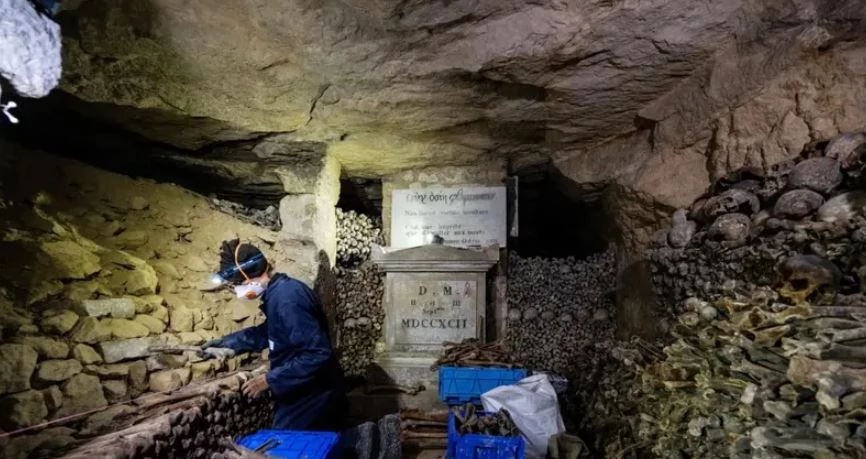Dry bone walls: Paris rebuilds its Catacombs

Stay tuned with 24 News HD Android App

In gloomy burial tunnels under Paris, workers carefully stacked the bones and skulls of people killed during the French Revolution into a new, neater wall.
The Paris Catacombs, the final resting place for several million Parisians, is starting to rebuild its collapsing walls of human remains.
This week visitors to the massive underground ossuary, which attracts some 600,000 tourists a year, could spot experts beavering away in a brightly lit corner to realign one of its around 200 stacks of bones.
The "wall of the September 1792 martyrs" includes the remains of some 1,000 people killed during one of the bloodiest episodes of the French Revolution.
Dry stone wall builder Martin Muriot said restacking their bones was a balancing act like building any other wall without mortar.
"It's a bit like playing with wooden building blocks," he said, dressed in a blue jumpsuit and face mask.
First specialists need to sift through the bones to pick out those in best condition for the new wall's facade. "All the damaged ones will be used as filling," he said.
Nearby two glove-wearing technicians worked together to remove a skull and replace it with another. But as they did, a skull tumbled to the floor. One of the technicians, Hubert Joachim, then painstakingly placed small bits of debris above a row of fragile skulls.
"Without these wedges, the bones (on top) would touch the skulls and could break them," said Joachim, who usually handles works of art. Civil engineer Nathanael Savalle said building a bone wall was a tricky business.
Its blocks are "six times lighter than earth", he said. There's a "lot of empty space both between and inside the bones". French authorities began moving human remains from the city's burial grounds to abandoned quarries under Paris in the late 18th century, worried that decomposing cadavers were a health hazard.
They then moved more when the capital was rebuilt in the 19th century. Catacombs manager Isabelle Knafou said rebuilding this first wall -- a stack 2 metres (6.5 feet) long and 1.8 metres high -- was a test. If all went well, others inside the ossuary would be redone next year and the year after.
She pointed to a net holding up another wall not far off, its middle bulging out after a part of the quarry ceiling fell on top of it. "Bones can last hundreds of years", but time, erosion and humidity can damage the stacks they have been placed in, she said. Some 20 metres (65 feet) under the capital's bustling streets, it's an unusual place to be rebuilding a wall.
